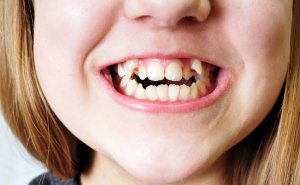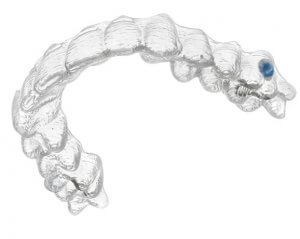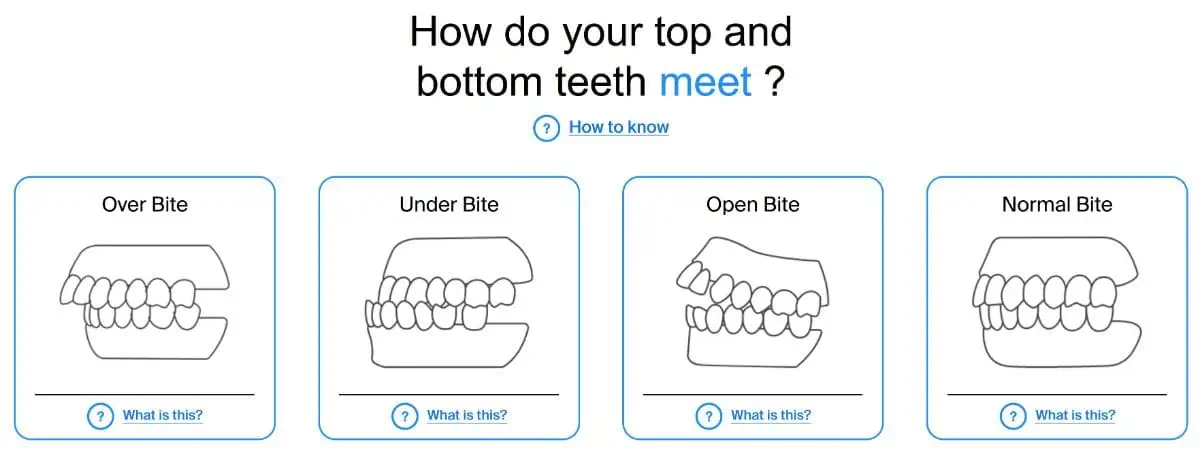The teenage years are the best time to correct misaligned teeth since your bones are still growing. But many teenagers dread the idea of having to go to school with “metal mouth” AKA dental braces. Fortunately, with Invisalign for Teenagers, there is a much less noticeable way for children and teens to straighten their teeth.
In this article, we’ll explain how invisible braces work and the specific benefits of Invisalign for teens which make this system an ideal choice. You can also learn what Invisalign costs for teenagers in the UK, plus other factors to consider.
In This Article
Why get braces as a teenager?
Although it’s never too late to get orthodontic treatment for teeth straightening, the ideal time to begin is between the ages of 11 and 13. At this point, you should have most – or all – of your adult teeth, but your jaw bone and facial structure is still developing. It’s easier to adjust the position of the tooth roots at this stage than if you wait until adulthood.
Some children might benefit from earlier orthodontic intervention, in which case Invisalign First could be an appropriate solution.

The benefits of getting your teeth straightened are numerous. They include:
- Greater confidence in your smile
- Improved facial aesthetics
- Less chance of damage to prominent or misaligned teeth
- A better bite for chewing and eating
- Easier oral hygiene
The last point is important to note, since straightening your teeth as a teen can give you a better chance of maintaining good oral hygiene throughout the rest of your life. If your teeth are misaligned, it’s harder to clean them. This means more plaque will build up, leading to tooth decay. As the years go on, you’re more likely to need fillings, crowns, and even extractions.
Wearing braces as a child or teenager isn’t easy. It’s inconvenient and can be painful at times. But clear aligners do at least offer greater discretion than conventional metal braces.
Transform your smile with NewSmile aligners, designed for convenience, comfort, and speed.
Achieve straighter teeth in just 4-6 months from the comfort of your home, at 75% cheaper than traditional braces. With an easy 3-step process, including an impression kit, 3D treatment preview, and all-inclusive aligner package with free retainers and teeth whitening, there’s never been a better time to start.
Plus, enjoy the peace of mind with our full refund guarantee if you’re not a suitable candidate. Ready for a confident, new smile? Click here to begin your journey with NewSmile today!
For more information, read our NewSmile Review.
Click the button below to get started!
How do Invisalign teen aligners work?

The Invisalign system for teenagers is the same as the Invisalign Comprehensive system for adults, but with a couple of added features.
Clear aligners are custom-made according to a personalised treatment plan. Patients receive one for the upper jaw and one for the lower. They fit snugly over the teeth and apply pressure in certain places to move the teeth into better alignment.
Invisalign dentists and orthodontists use advanced technology like 3D mouth scanners. They also use Invisalign’s SmartStage proprietary technology which tracks and optimises tooth movement throughout treatment, resulting in more predictable tooth movement and results.
How long does Invisalign for teens take?

Total treatment time will be around 12-24 months, depending on the tooth movement required. Dentists provide a new set of aligners to use approximately every two weeks. Provided your teeth respond to the treatment as planned, you only need to visit for a checkup every 6-10 weeks.
Aligner braces can be used to close gaps between teeth, straighten crooked teeth, and treat overbites and underbites – see some real Invisalign results for an idea of what they can achieve.
If the patient has just a minor malocclusion, it may be possible to complete a shorter treatment course with Invisalign Lite. If, however, the tooth misalignment is very severe, Invisalign braces may not be able to treat the problem.
Can a 13-year-old get Invisalign treatment?
Yes, many patients start treatment at the age of 13 – sometimes earlier. Others might need to wait until age 15 or 16 when their adult teeth are more settled. Each patient is different, but the versatility of Invisalign aligners means they can treat around 90% of cases in patients of all ages.
If you’re considering Invisalign for your teenager, it’s a good idea to have a consultation with an Invisalign provider to discuss treatment options and costs. If you find out you aren’t a suitable candidate, keep reading to the end of this article where we have some information on alternatives to invisible aligner braces for teens.
Invisalign vs braces for teenagers
The following video summarises the pros and cons of Invisalign vs braces for teens:
Perhaps the most obvious benefit of Invisalign for teenagers is the improved aesthetics compared with metal braces. Although not completely invisible, clear aligners are very hard to notice – especially from a distance.

Sadly, many children and adolescents experience teasing at school when they wear braces. The idea of straightening teeth in a less noticeable way, therefore, has obvious appeal for both children and their parents.
Teenagers who have a special event coming up – such as a graduation ball – will welcome the chance to be able to remove their braces for the photos. This can also be beneficial for contact sports players who would otherwise worry about damaging their braces (and their mouths) during the action.
Another advantage of using removable aligners is the freedom to eat anything you like. With fixed braces, there are restrictions on eating chewy, sticky, crunchy and hard foods because of the damage they can cause to the braces. But with the Invisalign system, all you need to do is pop the aligners out and eat as normal.
Wearers must remember to clean their teeth and aligners after eating, before replacing them. And aligners need to be worn for 20-22 hours per day for treatment to be effective.
Special features of Invisalign for teenagers
Many parents are naturally concerned that, given the option to remove their braces, their child won’t wear them as much as they should.

Fortunately, Invisalign treatment for teenagers includes the following features to make it ideal for younger patients:
- Blue wear indicators that fade over time (pictured). These are a guide for parents and dentists to check whether the aligners are being worn for the required 20-22 hours per day.
- A special design to allow for new teeth which are still erupting.
- Up to six free replacement aligners included over the course of treatment, in case any are lost or damaged.
All of these things make aligners a good choice for parents who want the aesthetic benefits of invisible braces for their teenager without having to worry about the potential downsides. And they are clearly a popular choice – in September 2021 Align Technology celebrated treating their 11 millionth smile, and more than 1.4 million of those have been teenagers.

How much does Invisalign cost for teenagers in the UK?
Invisalign for teens costs around £2,500 – £5,000, depending on the complexity and length of treatment required. This can work out a little more expensive than metal braces for some patients.
Is Invisalign free for under-18s in the UK?
No, only metal braces are available for free on the NHS for under-18s, and only if deemed medically necessary by an orthodontist. Aesthetic braces like Invisalign are not available on the NHS and must be paid for privately.
It is a significant investment, so you will need to weigh up the pros and cons and decide what is going to be best for your child. There are some finance options available if you need help paying for the treatment.
Cheaper aligners for teens
Invisalign is not the only clear aligner brand in the UK; it may be the best-known, but it is also one of the more costly options. Our guide to the best teeth aligners in the UK has more information about others you may want to consider.
Before beginning any kind of aligner treatment, it’s important to visit your dentist to check that your overall oral health is in a good state.
Alternative braces for teenagers
Around 200,000 children and teenagers get braces every year in England and Wales. Patients usually have the option to personalise metal braces with different coloured bands – if you can’t hide them, why not show them off?
But if you’re after something less obvious and have decided against Invisalign, here are some other options to consider:
- Clear braces: These work in the same way as traditional braces but the brackets are made from a clear material which blends in with the teeth. This makes them far less obvious.
- Ceramic braces: The brackets are either clear or tooth-coloured to match the patient’s natural tooth colour. Sometimes the wire is tooth-coloured as well.
- Lingual braces: These ‘hidden’ braces are concealed on the inner surface of the teeth. They still use metal brackets and wire but are hard to notice.
We have another guide with more about different types of braces for teens and adults, but below is a summary of the cost and other things to consider when choosing between these options. These are prices for full mouth treatment (both the upper and lower jaw).
Approximate cost | Pros | Cons | |
Invisalign Teen | £2,500 - £5,000 | Almost invisible; removable | Requires willpower; can be lost |
SmileDirectClub | £1,639 | Almost invisible; removable; affordable | Not suitable for all teenagers; requires willpower; can be lost |
Metal braces | Free to under-18s on the NHS; otherwise £1,500 - £4,000 | No charge for eligible NHS patients; suitable for all cases; can be customised | The most obvious style of brace; can be uncomfortable |
Ceramic / clear braces | £3,000 - £6,000 | Less noticeable than metal braces | A more expensive option; still quite visible |
Lingual braces | £4,000 - £10,000 | Hidden behind teeth; very inconspicous | Hard to clean; often the most expensive option |
Conclusion
If you or your teen want straighter teeth without it being obvious you’re wearing braces, Invisalign for teenagers could be the best option. With these clear aligners, ‘metal mouth’ taunts needn’t be a worry. Plus there’s the added benefit of increased comfort and special features designed specially for under-18s.
However, there are many good Invisalign alternatives to consider too, especially if cost is a consideration.
We also have a separate article on braces for kids – take a look if you have younger children who need orthodontic treatment. With so many options available, you should be able to find a solution that suits you. Our aim is to provide all the information you need to make that important decision.
American Journal of Orthodontics and Dentofacial Orthopedics: Has Invisalign improved? A prospective follow-up study on the efficacy of tooth movement with Invisalign. Consulted 10th December 2021.
British Orthodontic Society: Why Orthodontics? Consulted 10th December 2021.
Prices stated are indicative only and are based on publicised treatment prices at dental clinics across the UK.




